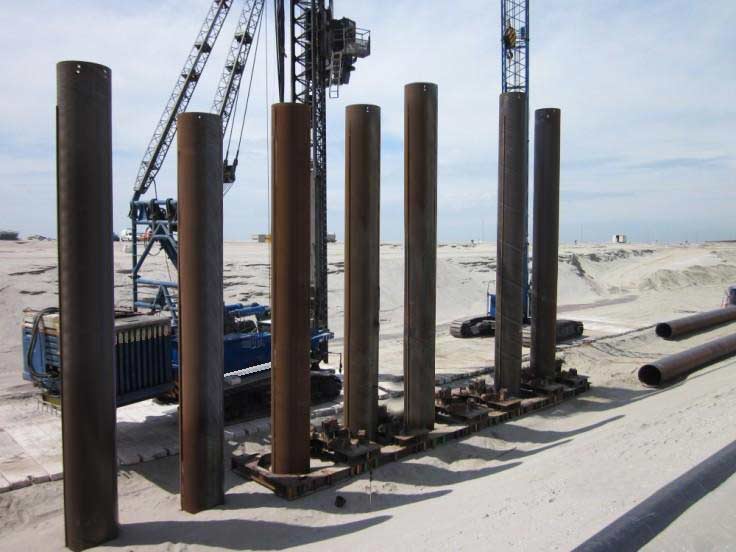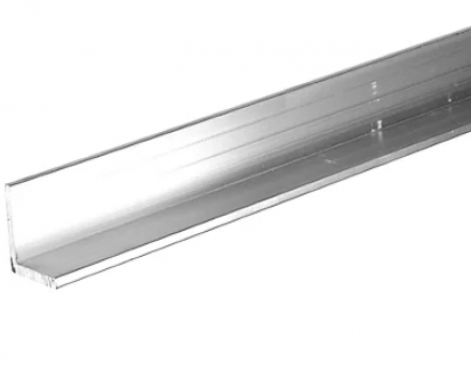1. Project Overview
The anti-corrosion coating of steel pipe piles may be damaged to a certain extent due to collision, friction, etc. during transportation, pile lifting, and pile sinking. In addition, the coating will also be damaged during the construction process of the wharf superstructure, such as ship collision, welding corbels, etc. In order to ensure the quality of anti-corrosion coating on steel pipe pilings, this plan is prepared.2. Construction method of steel pipe pile coating repair
2.1 Shipping time guarantee
The hardness of the piling pipe coating is closely related to the degree of damage. To reduce the damage of the coating, it is necessary to ensure that the coating has sufficient curing time to improve the hardness of the coating. After the steel pipe pile is coated, 7 days Piles can be driven later.2.2 Selection of spreaders
Use steel wire rope as a spreader when loading and lifting and piling, and wrap 2 to 3 layers of geotextile around the contact area between the steel wire rope and the steel pipe pile to prevent the steel wire rope from scratching the coating during the lifting process. Be careful during the construction process and try to avoid collisions between the finished steel pipe piles and surrounding hard objects.2.3 Repair on water
Although the above guarantee measures have been taken, if there are still some damages, they should be repaired on the water before pile sinking. The repair should use heavy-duty anti-corrosion paint. This paint has good adhesion and can be solidified in seawater, which can meet the requirements of water repair. Require. If the construction of the superstructure damages the anti-corrosion coating of the pile foundation that has been sunk, and if the damaged location is above the lowest tide level, water repair methods can also be used if construction conditions permit.Before repairing, remove the loose old coating at the damaged area, and then use an electric grinder to grind or use a wire brush to remove the rust and oxide layer on the surface of the steel pipe pile. According to the performance of the product and the actual situation on site, select the appropriate mix ratio and apply it in layers.
2.4 Underwater repair
If severely damaged areas of underwater steel pipe piles are found during cathodic protection construction of steel pipe piles, underwater repair methods should be adopted if necessary, and underwater construction coatings should be used for underwater repair. First carry out surface treatment: use special underwater electric air shovels, wire brushes and other tools to remove marine organisms, oxide scale and rust attached to the surface of the steel pipe piles. The paint is ready for use, mixed evenly according to the determined proportion, and applied immediately. Apply the paint evenly on the fiberglass bandage, then wrap it around the surface of the steel pipe pile in water, and then place the bandage as tightly as possible on the surface of the steel pipe pile.
3. Quality assurance for steel pipe pile coatings
(1) Construction shall be carried out in strict accordance with construction specifications and quality requirements. Carry out construction, inspection, acceptance and protection in accordance with the requirements of design and related engineering technical regulations. Anti-corrosion construction shall be carried out in strict accordance with the approved construction plan to ensure that the design and specification requirements are met;(2) Provide technical briefings to technicians and construction personnel in accordance with the design and construction plan approved by Party A:
(3) Construction is strictly prohibited when the construction conditions are not met or the environmental conditions affect the construction quality;
(4) After the anti-corrosion layer is constructed, do not hit the paint layer with sharp objects to avoid damage to the paint layer. If the paint layer is accidentally damaged during construction, repairs should be carried out in time;
(5) The procurement, storage and construction of construction materials are always under control, especially inspection and supervision according to the set quality control points;
(6) The repair parts are small and complex, and the operation is inconvenient. Inspectors are prone to neglect, and construction workers must pay special attention to consciously ensuring quality;
(7) When repairing, rust stains and marine organisms on the surface of the steel should be removed with a grinder or manually, and the rust removal level must reach St3 level or above;
(8) The connection between the new anti-corrosion layer and the old anti-corrosion layer is in a stepped manner, and the interface must be overlapped. The overlap should be kept at least 50mm.
(9) When painting, the layers are crisscrossed and each layer is reciprocated. The time interval between painting should meet the technical requirements of the paint, and the paint film thickness should meet the design requirements. During the drying process of the paint film, the surrounding environment should be kept clean to prevent the surface of the paint film from being contaminated.
(10) Painting construction tools should be clean, and they should be properly cleaned during use and disposed of after use.
(11) Visually inspect each root. The surface of the covering layer should be uniform, smooth, and free of bubbles, wrinkles, bulges, uneven pressure and other covering layer defects.
(12) The repaired coating should completely cover the damaged area, and the thickness should meet the design requirements.
4. Safety assurance measures
4.1 Technical assurance measures for safety in anti-corrosion operations
(1) Strictly follow the rules and regulations and correctly use personal protective equipment and safety protection measures such as dust masks, goggles, and seat belts. Construction workers must wear safety helmets, work clothes, and dust masks when entering the site. They must wear safety belts when working at a height of more than 2 meters.(2) All temporary electrical equipment on site must strictly comply with electrical safety regulations and relevant regulations. Especially in construction operations in humid environments with a lot of rain at the turn of spring and summer, electric wire brushes must use safe voltages, one machine, one gate and one protection to prevent electric shock accidents.
(3) Flammable and explosive items (paints, chemicals, oils, solvents, etc.) should be kept and stored by designated personnel.
Keep the location well ventilated.
(4) Strictly abide by the fireworks management regulations in the anti-corrosion work area, and smoking and making fire are not allowed in the area, such as
If a fire is required, a written application must be submitted in advance and approved by the on-site project department supervisor. Fire work can only be carried out under the supervision of safety personnel.
4.2 Safety measures for underwater operations with coated steel piles
(1) Technical briefing must be carried out step by step, and technical briefing should have written information or operation instructions (or operating rules). Technical disclosures must be highly targeted, signature procedures must be performed, and information must be preserved. Work area safety officers are responsible for supervision and inspection, and operations must be carried out in strict accordance with the regulations on safety technical disclosures.(2) The focus of construction site safety education is on-job production knowledge and job safety operating procedures, as well as safety ideas, construction disciplines and safety production systems. Construction site safety education must be targeted and should be combined with the characteristics of the construction site and the actual production situation; construction site safety education should be planned, timely and effective, and after training and assessment, a safety certificate will be issued.
(3) Carry out safety work for diving and underwater welding operations. Diving operations must meet the occupancy requirements. latent
Sailors, rope handlers, telephone handlers, and diving hose handlers (hose pullers) must be operated by diving operators, and others are strictly prohibited from replacing them.
(4) Before working underwater, divers should carefully check the safety performance of the diving equipment and confirm that it is in good condition before putting it on and entering the water.
(5) During diving operations, diving service vessels must hang signal flags, night operations must hang signal lights, and have sufficient work lighting.
(6) Divers must be familiar with the regulations for using signal ropes and the predetermined contact signals. The signal rope handlers and rope pullers should observe the tightness of the signal rope and air supply hose at any time, and ask about the underwater operations at any time. The divers should strictly follow the instructions of the surface caller.
(7) During underwater operations, divers are strictly prohibited from using the signal rope for other purposes.
4.3 Technical assurance measures for safety in water operations
(1) Workers working on water (working near water) must be familiar with swimming. It is strictly forbidden for one person to work alone.Life jackets must be worn correctly, and tubed water shoes or spiked slip-on shoes must not be worn for work;
(2) It is strictly forbidden to play or play on the traffic boat, and you are not allowed to get on or off the boat until it has stopped;
(3) Life-saving facilities should be installed in obvious locations on the ship and on the shore for emergency use when someone falls into the water;
(4) Under severe weather conditions (strong winds above level 6, heavy rain or heavy fog), no water operations are allowed
(5) Swimming is not allowed at the construction site. If you need to go underwater due to work needs, you must obtain the consent of the person in charge of the construction and take adequate protective measures before proceeding (except for rescue situations).
Previous: ASTM A252 steel pipe pile









